This site uses only a few technical cookies necessary for its operation. By continuing to browse, you accept their use.
To find out more...
To find out more...
How to zest a fruit?
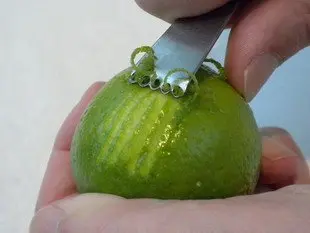
You will have no doubt noticed that many recipes call for the zest of citrus fruit. The zest is that outer layer of the skin which adds so much flavour to a dish.
There are many different ways to peel off the zest and various tools are available. Here is a summary of the “dos and don'ts” of zesting.
There are many different ways to peel off the zest and various tools are available. Here is a summary of the “dos and don'ts” of zesting.
47 K 3.8/5 (59 reviews)
Keywords for this post:ZestZisteZesterGraterFruitCitrusSkinPeelLast modified on: November 5th 2013
How to zest a fruit?
Good fruits
First and foremost: zesting a fruit means removing the upper, outer part of the rind, which also happens to be the part that receives most of the chemical treatment inflicted on the fruit.
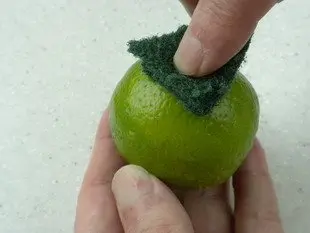
So be careful: you absolutely must wash the fruit thoroughly before zesting it, but the best thing to do is to use organic fruit, which is guaranteed to be untreated.
The right part of the fruit
The part of the peel that can be zested is generally very thin, 1 millimetre or less, so it's very important to remove only the coloured part of the peel - the zest - and not the white part underneath, which is not zest but a major source of bitterness, to be avoided at all costs!
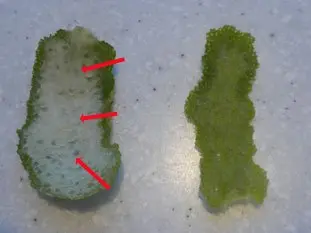
In this photo, you can see the zest on the right and the white part of the peel on the left.
The right tools
There are a number of more or less effective tools for zesting:
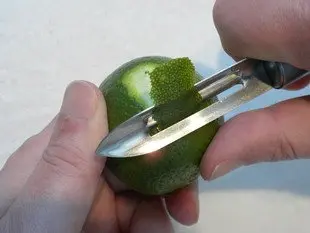
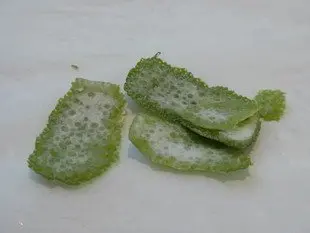
1) The peeler or a sharp knife: with it, you delicately "peel" the fruit and obtain small strips of zest (colored, remember: no white) which you then have to cut into strips, then into tiny pieces. It's not very fast, nor very efficient, but it works.

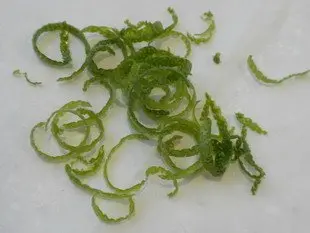
2) The zester: this is a strangely-shaped knife that zests by making tiny filaments. The structure of the zester means that you can't remove any white parts, which is interesting. The only drawback is that the zest obtained is a little "crushed" and "exuded", so it's not great.
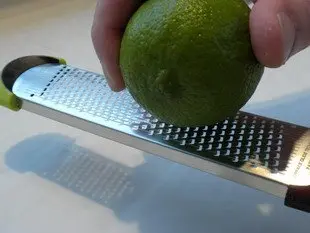
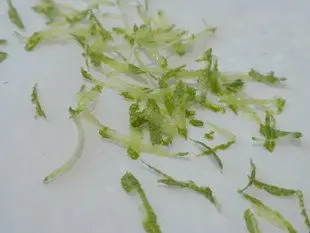
3) The zester grater: This is a bit like a cheese grater, very fine, on which you rub the fruit while rotating it (be careful, it's the fruit that moves, not the grater).
It's by far the most efficient of all tools, and you can find out more about it on this page.
Lasts posts
Butter vs. grease
We often read in a recipe where a pastry is put into a mould that, just before pouring, the mould should be buttered or greased. But what's the difference between these 2 terms?December 1st 20251,0515
Getting out of the fridge early
Very often when you're cooking, you need to take food or preparations out of the fridge, to use them in the recipe in progress. There's nothing tricky about this: you just take them out of the fridge and use them, usually immediately, in the recipe. But is this really a good method?November 24th 20251,1535
Who's making the croissants?
When you look at a bakery from the outside, you naturally think that in the bakery, the bakers make the bread, and in the laboratory, the pastry chefs make the cakes. It's very often like that, with each of these professions having quite different ways of working, but sometimes there's also one...November 23th 20251,046
Oven height
When we put a dish or cake in the oven, we naturally tend to put it on the middle shelf, and that's what we usually do. But in some cases, this position and height can be a little tricky, so let's find out why.October 8th 20252,8275
The importance of sieving
In recipes that use a fine powder (flour, powdered sugar, etc.), you'll often see the advice to sift before using it. To sift is to pass the powder in question through a sieve (a very fine strainer) before incorporating it into your recipe. It's often advice, but is it really useful?September 3rd 20257,5703
Other pages you may also like
A few tips for effective kneading at home
When you have to knead dough for bread or some other recipe, you may well use a food processor or the type of machine known as a stand mixer. The best-known brands are Kenwood and KitchenAid. They are useful tools, but here are a few tips to help you get the best out of them.June 23th 2021284 K 23.8
Drawing a pattern in pastry
Often in the kitchen, in pastry-making, or in baking, we need to trace a pattern on a pastry. It's just a question of aesthetics but it has its effect after baking on a galette, pithiviers, pâté en croute (terrine in a pie crust), etc.May 23th 201935 K4.1
Candied fruits: don't get ripped off
Do you like candied fruit? You might like to nibble a handful or add it to a recipe, like a classic fruit cake or delicious Italian specialities like panettone or sicilian epiphany pie.June 21th 201767 K 24.2
Egg yolks and caster sugar
We often come across recipes where we need to mix egg yolks with caster sugar. This would appear to be a very ordinary and simple thing to do but, be warned, these two ingredients can behave oddly together.February 15th 201883 K 24.3
The beautiful story of the croissants
As you may have already noticed, cooking, baking and pastry-making are full of stories or legends, usually very romantic, about this or that product or recipe. This is often the case for named recipes, for example tarte tatin, peach melba, paris-brest and many others, but it also applies to very...October 10th 201819 K5
Post a comment or question
Follow this page
If you are interested in this page, you can "follow" it, by entering your email address here. You will then receive a notification immediately each time the page is modified or a new comment is added. Please note that you will need to confirm this following.
Note: We'll never share your e-mail address with anyone else.
Alternatively: you can subscribe to the mailing list of cooling-ez.com , you will receive a e-mail for each new recipe published on the site.









